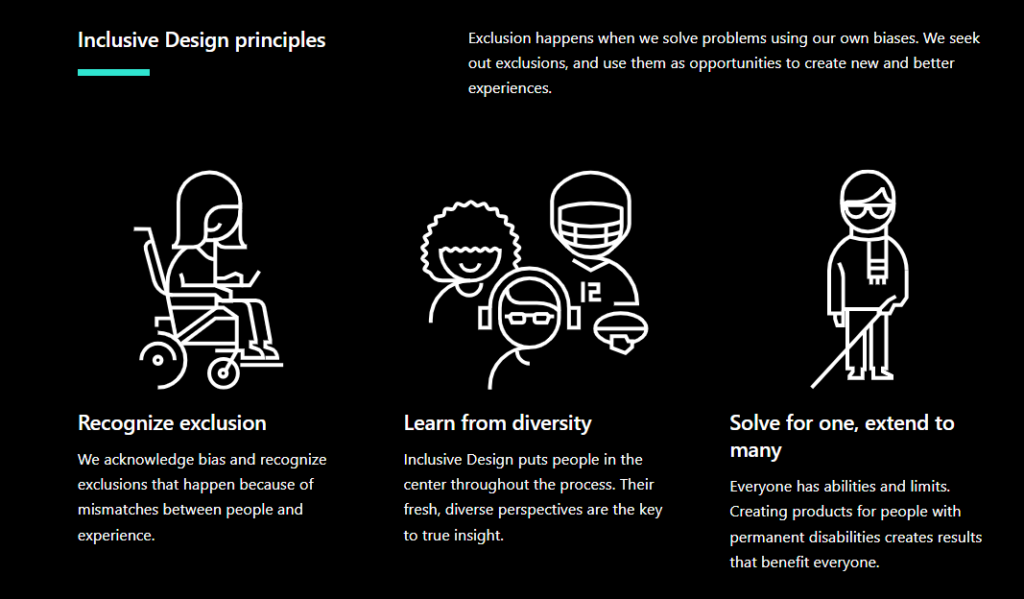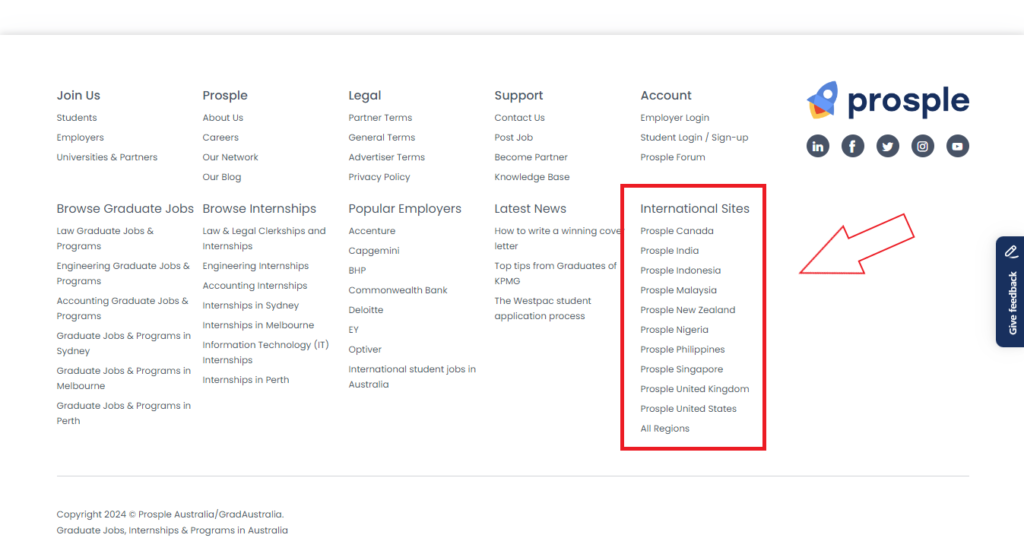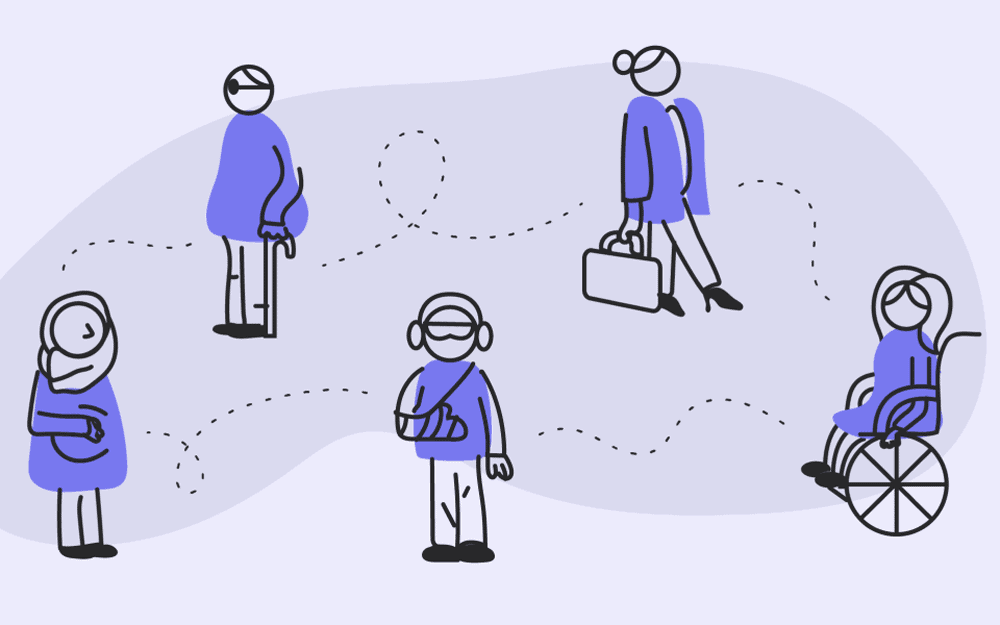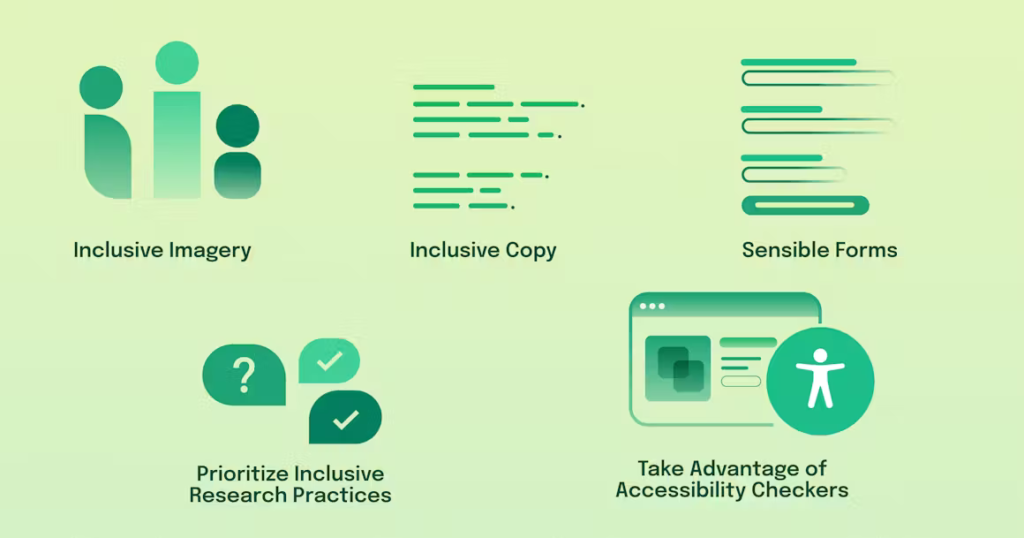Inclusive Design: Ensuring Your Brand Appeals To A Diverse Audience
Without knowing it, you alienate many potential customers if your business does not prioritise diversity. But there is good news – there is a solution which makes all people feel valued, regardless of their abilities or identities. This solution is called inclusive design.
This post delves into the idea of inclusive design for businesses. We will explain it and give three fundamental principles that should guide any organisation in implementing this approach. Additionally, we will provide steps to apply this concept to your brand.
Table of Contents
What Is Inclusive Design?

Inclusive design forms facilities, products, and environments that all individuals can use regardless of whether they constitute the majority or minority. It involves recognising differences among a wide variety of humans, such as:
- Capabilities (physical, sensory and cognitive)
- Years
- Language
- Culture
- Gender
But there are some points about inclusive design which you should know:
The aim is to create usable and understandable products and experiences for everybody.
Instead of trying to fix things later on, think about design with everyone in mind right from the start.
It is still inclusive even if you do not have any disabilities, as it makes things more accessible and fun to use, too. For instance, features like large font sizes or voice commands designed for visually impaired people become very useful when using their phone under direct sunlight or multitasking.
3 Principles Of Inclusive Design

Microsoft released an inclusive design toolkit in 2015. This toolkit is based on three principles that are now widely taught in universities, and Microsoft provides training for its employees. Let's take a closer look at these principles.
A. Recognise Exclusion
This principle is all about awareness. Acknowledge that when we design things, we often do so based on our personal experiences and abilities. This creates blind spots where we miss ways our designs might exclude people with different needs.
The principle tells you to actively look for these potential barriers in your designs, particularly if you are running an eCommerce store. There are different factors to consider, as this guide on building an eCommerce website highlights.
You are designing for a broad audience, not just yourself. Everyone shops differently, and you want to ensure a smooth experience. It might seem perfect in your head, but have you considered everyone who might use it? What about people with different abilities, backgrounds, or situations?
Someone may have low vision, use a screen reader, or speak a different language. Perhaps they are in a noisy environment or have learning difficulties.
It is not just about physical disabilities. Temporary situations like a broken arm or situational limitations like using a public computer can create barriers. Recognising exclusion means understanding these gaps in your inclusive design process and how they prevent someone from using your design effectively.
This doesn't mean you need to be an expert on every disability. It means being open to the possibility that your design might have exclusions and being willing to learn more about making it accessible for everyone.
B. Learn From Diversity
We all have our way of seeing the world. However, the beauty of inclusion is that it brings different experiences to the table. People from various backgrounds, abilities, and cultures use your design. Each perspective offers valuable insights into potential roadblocks.
The aim here is to seek out these different viewpoints actively. Imagine you are building an online job portal for graduate students. Your goal? To make it the ultimate resource for discovering different career paths. At the same time, you want it to be as inclusive as possible – just like how this particular page for Australian internships did.
Knowing that some Australian students look for opportunities overseas, they added an “International Sites” section in the footer to make them feel included. Here, the students can easily access different site versions for similar opportunities in other countries.

Traditionally, graduate students are seen as a relatively homogenous group. But go deeper. Graduate students come from different academic disciplines, socioeconomic backgrounds, and countries.
Maybe an international student needs the job descriptions translated into their native language. Perhaps someone with dyslexia needs a text-to-speech feature for job postings. What about those with visual impairments who rely on screen readers?
Don't just design based on your experience or the average graduate. Reach out. Talk to students from diverse backgrounds and abilities—partner with disability resource centres at universities. Get feedback from international students.
Inclusive design methodology doesn’t mean you create separate job boards for different types of grad students. It is about incorporating these diverse needs into the design from the start. This means different features that work for everyone, from international students to those needing screen reader compatibility.
C. Solve For One, Extend To Many
If something is designed to meet the requirements of a specific user, it often turns out that this solution works better for everybody else.
For instance, when you make a video and add subtitles for a person who can’t hear, these captions will aid those learning the language or watching videos in noisy environments.
Another example is running a blog with clear layouts designed concisely with solid contrast, which benefits individuals with poor eyesight and allows everyone to skim through information quickly. Similarly, keyboard shortcuts save time for people with limited motor skills and other efficient workers.
The point is that it catches more fish when we solve problems for many different types of users at once. In an inclusive design pattern, you might have been targeting one group but catching onto multiple benefits.
Universal Design vs Inclusive Design: How Do They Differ

Both universal design and inclusive design aim to make things more accessible to people. However, their methods of doing this are different. Let’s talk about the main differences between the two.
1. Perspective
Universal Design is based on what we all share in common. Products should be designed for everyone, regardless of their abilities or age. You must find those essential features that many people can use.
On the other hand, Inclusive Design tries to cater to a broader range of users than Universal Design. It acknowledges that each person is unique with their own set of needs and preferences. When creating things, it would be best to consider these individual variations involving different cultures and abilities.
2. Method
The universal design approach is often called a one-size-fits-all strategy, where you create a single solution that meets all customers’ requirements. This means predicting the most typical needs and skills and providing them through one product or service. Such an approach can be beneficial, especially when dealing with products having a broad target audience.
In contrast to the above, inclusive design has a more flexible attitude towards solving problems and meeting the needs of various people who might want to use a particular item or system differently from others because they find some aspects more convenient than the rest due to their physical condition, etc. Thus, under this principle, multiple solutions may be created or alternative ways offered so that different user groups can interact with products according to what suits them best.
3. Origin
The universal design originated in physical environments. Architects and designers started thinking about ways to create buildings, parks, and public spaces that everyone could use, regardless of age, ability, or physical limitations. This led to features like ramps, wider doorways, and Braille signage.
On the other hand, inclusive design concentrates on creating and selling digital products like the ones in this digital products guide. The focus is that they are usable by people of all abilities.
This includes websites and apps that have an accessible design for people with disabilities, as well as users with varying technical skills, language backgrounds, and learning styles.
4. Scope
Universal design is used to create products for the broadest user base possible. You consider most people's needs and target a solution that caters to that range, regardless of background or ability. An excellent example of this would be creating a smartphone with larger buttons to accommodate both the young and elderly.
However, inclusive design takes things a step further. It acknowledges the full spectrum of human diversity. This includes people with disabilities, different cultural backgrounds, varying technical skills, and even temporary situations like someone using the phone with sunglasses on. This ensures a product is truly usable by everyone.
How To Implement An Inclusive Design In Your Brand?

Let’s talk about applying inclusive design principles to your brand to create an inviting experience for all and reinforce your brand identity.
I. Know Your Audience
The first step towards implementing inclusive design into your brand is understanding your audience – going beyond demographics. Knowing their ages, locations and interests is good, but inclusive design goes deeper.
Consider different ways people may engage with your brand.
- Are there any cultural sensitivities?
- Are you neglecting any accessibility needs?
- Does your target audience have varying technical skills or learning styles?
The more you recognise this diversity within your audience, the better your chance of making them feel included through your branding efforts.
II. Find The Gaps
This means examining where inclusivity falls short throughout various touchpoints of interaction with your company, such as websites, marketing materials, customer-service approaches, etcetera – anything that represents or communicates what it stands for.
- Does any marketing language unintentionally exclude certain groups?
- Is the website designed so users with visual impairments or motor difficulties can navigate it easily?
- Are there elements which might be confusing for people from different cultures?
Be honest with yourself here – there will probably be some areas where improvements can be made. This is an opportunity for you to create stronger brands that are more welcoming to all individuals. Use this as a basis upon which solutions should be brainstormed so that the result reflects true inclusivity throughout every aspect of its creation.
III. Establish The Purpose & Scope Of Inclusive Design
Start thinking about what you want to achieve: Why does inclusive design matter? Is it about reaching wider audiences? Creating favourable perceptions among potential customers? Having clear goals will direct efforts towards achieving them consistently over time.
Next, consider scope – everything doesn't need changing right away or simultaneously; maybe begin with web accessibility, e.g., screen reader compatibility features or alt-texts for images; alternatively, pay closer attention to how inclusive language is used in your marketing materials.
The key is to prioritise and select areas where they will most significantly impact the target audience; hence, start with achievable objectives plus clear direction – this should enable one to create a brand that resonates with everybody.
IV. Incorporate Different Perspectives Into The Design Process
When creating products or services for a broad range of people, seek opinions from those who have lived through diverse experiences to avoid leaving anyone behind during the development stage, thus ensuring it captures all users’ needs.
Engage designers with various backgrounds, abilities and ethnicities as part of the team; involve different individuals at different stages – could be done through surveys, focus groups, interviews, etcetera; don't limit yourself within immediate circles but instead reach out wide by partnering user research organisations specialised in diversity & inclusion.
Remember, brands become likeable when they appear real and understand what their customers require – therefore, include many voices while designing because each will contribute something unique towards completing the puzzle about who you want to connect with most deeply through your company’s offerings.
V. Use Inclusive Language & Imagery

The words and visuals you choose shape how people perceive your brand. Firstly, use language that is clear, respectful, and avoids stereotypes. Think of someone from any background using your product or service. Would they feel included by the way you describe it?
For instance, instead of saying “businessman,” consider “professional.” This opens up the idea to people of all genders. Think about people with disabilities, too. Instead of “normal,” use “typical” when referring to features.
Consider using inclusive design tools to help you check your language for bias. If writing isn't your strong suit, hire specialised content writers who understand the specifics of inclusive language.
You can work with Upwork and Fiverr, but reliability and quality are always issues. They may be familiar with inclusivity.
The best way to do this is to hire an expert from a specialised agency like Genius. With a strict vetting process, you can specify candidate requirements so they only present qualified candidates who fully understand the concept of inclusivity.
Images are powerful. They can tell a story about who your brand welcomes. Show a diverse range of people using your product. This can be age, race, ethnicity, ability – anything that reflects the beautiful variety of your audience.
You can find such images on stock photo websites like Shutterstock, Adobe Stock, or Getty Images, where you can search for terms like “diverse group,” “inclusive,” or “multicultural.”
If you feel stuck, check out these inspiring website designs. See how they use language and visuals to create a welcoming and representative experience. Getting inspiration from others can jumpstart your creativity.
VI. Provide Multiple Ways To Access Content
Think about all the different ways people prefer to take in information. Some prefer written text, while others enjoy listening to an audio version. Visual learners would want clear and concise infographics. Some others prefer other formats, such as presentations, with diverse slides and designs.
Offer your content in multiple formats. Sure, text is excellent, but people consume information in other ways. Here are three ideas:
- Add narrated descriptions to images and videos.
- Make your videos accessible with captions and transcripts.
- Keep your written content easy to understand. Avoid complex sentence structures and jargon.
Beyond sight and sound, there are other ways to make your content accessible:
- Ensure your website or app can be fully navigated using just the keyboard for people who use screen readers or have motor limitations.
- Use good colour contrast between text and background. This makes it easier for everyone to read your content, especially those with visual impairments.
VII. Test With Diverse Users

People come from all abilities and backgrounds. Testing with a diverse group helps you identify areas that could be clearer or easier for some users.
For instance, someone with colour blindness can’t see the difference between essential buttons. Or, someone using a screen reader might get stuck on a complex navigation menu.
Testing goes beyond websites and apps. Consider how people with different abilities will interact with your physical marketing materials. For example, is the font size on your brochure big enough for someone with visual impairments? Is your packaging easy to open for someone with limited dexterity?
Think beyond functionality, too. Think about how fast your page loads – it is best to be under 2 seconds. A slow-loading website can be frustrating for anyone. However, for people with slower internet connections or those who use older devices, a slow load time can create a barrier to even experiencing your brand.
So how do you fix this? Recruit a group of testers with different abilities and backgrounds. Give them tasks using your website, app, or marketing materials. Observe how they interact and look for areas that cause confusion or frustration.
VIII. Refine & Improve Based On Feedback
After testing your design with diverse users, listen to their feedback closely. They will point out confusing or difficult-to-use areas. Be bold and make changes based on the input. Making these tweaks might seem like extra work, but it is worth it. But it needs a systematic approach:
- Look for common themes and identify areas where multiple users face challenges.
- Not all feedback can be addressed immediately. Decide which changes will have the most significant impact on making your brand more inclusive.
- Based on your priorities, update your brand elements.
- Run another testing round with a smaller group for significant changes to ensure the adjustments work as intended.
Remember, this is an ongoing process. As your brand grows and your audience evolves, be prepared to gather new feedback and make further refinements.
Conclusion
Inclusive design doesn't mean giving anything up. You can still be innovative and stylish while being easy to use for everyone. Next time you brainstorm, ask yourself: who are we forgetting? Because the more voices you include, the more you learn and the closer you get to creating something truly remarkable that works for everyone.
At Inkbot Design, we specialise in creating branding solutions that resonate with a broad audience. From the very start, we will work with you to develop visual elements, language, and user experiences that are design-inclusive. Let's build a brand that celebrates diversity, not excludes it. Contact Inkbot Design today for a free quote.
Author Bio: Burkhard Berger is the founder of Novum™. He helps innovative B2B companies implement modern SEO strategies to scale their organic traffic to 1,000,000+ visitors per month. Are you curious about your true traffic potential?
